By Hawaii.com Team
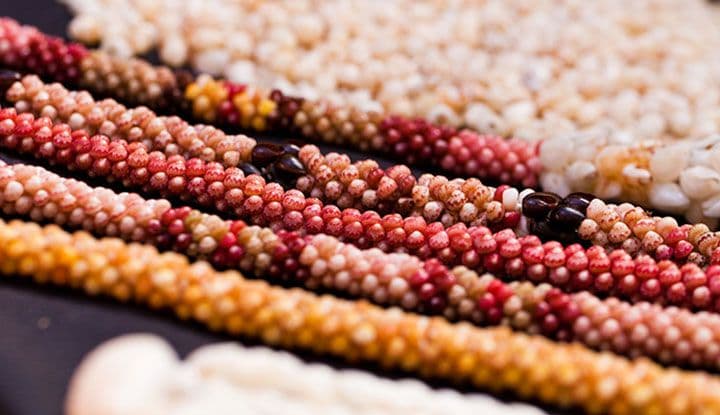
Niihau Shells. Photo courtesy of Hawaii Tourism Authority (HTA) / Tor Johnson.
For more than a hundred years royal persons, the queens and princesses of Hawaii have been depicted in paintings and photos with jewels draped around their necks, often reaching to their fingertips. Glowing like pearls the garlands are made of the most precious, and almost priceless, shell in the world, Pupu O Ni’ihau. The gem-like shells can be as tiny as the head of a pin and can only be found on the beaches of Hawaii’s private island.
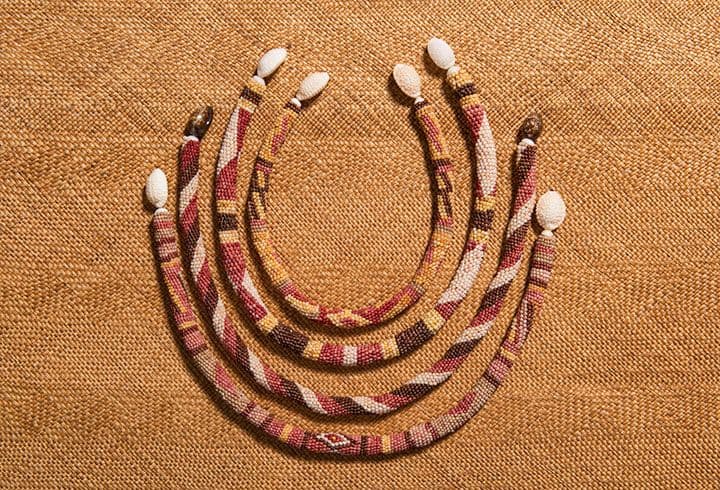
Niihau Shells. Photo: Star-Advertiser.
Ni’ihau is the most Hawaiian place you can imagine, but not a place to vacation. It is a silhouette on the horizon, seventeen miles off the coast of Kauai, across the Kaulakahi Channel, 3,000 miles from the U.S. continent. Hawaiian is the primary language spoken. Not open to visitors, transportation is by foot and bicycle. This 6- by 18-mile arid island with no electricity, no paved roads, no traffic jams holds stories rarely told. Time is plentiful. Life is simple. The art of collecting and sewing the rare shells has been handed down for many generations.
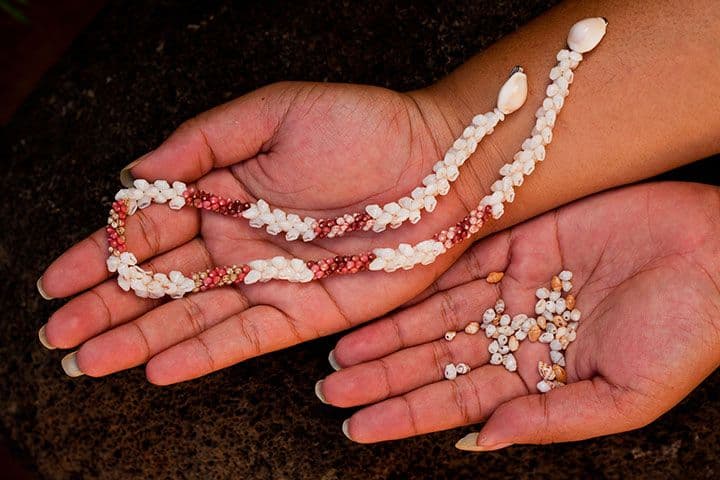
Niihau Shells. Photo courtesy of Hawaii Tourism Authority (HTA) / Tor Johnson.
Winter storms bring big waves to the tiny island making surf too big for fishing or harvesting shellfish, but perfect for depositing shells upon the sand. The beach is far from village home. Leaving before 5 a.m., the islanders must walk a mile, or sometimes nine miles, to the beach that looks most ripe for shell picking. The sun is relentless, burning the skin and blurring their vision. The wind never stops. They sit for hours, day after day, picking the tiny shells, separating them into bags and bowls of soft and hot pink, tan, white, green, yellow, coffee brown, midnight black and a red as bright as a Hollywood starlet’s fingernails.
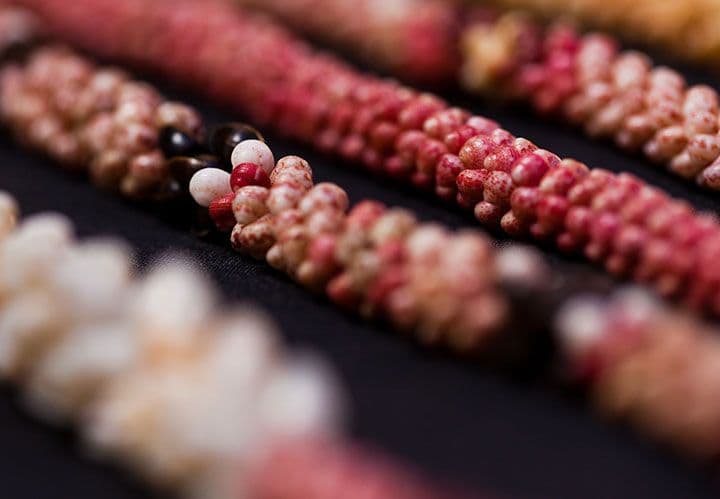
Niihau Shells. Photo courtesy of Hawaii Tourism Authority (HTA) / Tor Johnson.
In their cottages, often on the dining table, the craftsmen short shells for color and size. To create a lei of the finest red kahelelani or a traditional 20-strand wedding lei of white momi ke’oke’oke maika’i, an artisan may pick for a year, possibly two. They will not substitute, alter their design or rest until the shells are perfectly matched.
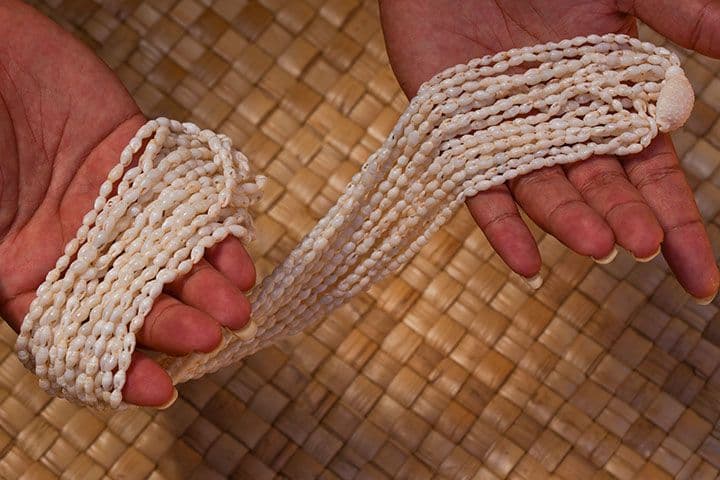
Niihau Shells. Photo courtesy of Hawaii Tourism Authority (HTA) / Tor Johnson.
Every grain of sand is gently removed. Each shell is clipped or pierced with a hole for stringing; an amazing feat considering that most shells are the size of grain of rice. Knotting and tying with nylon thread must be done with the lightest touch. Pull too quickly or too hard and the shell will shatter. Knotted properly, the necklace can last for generations.
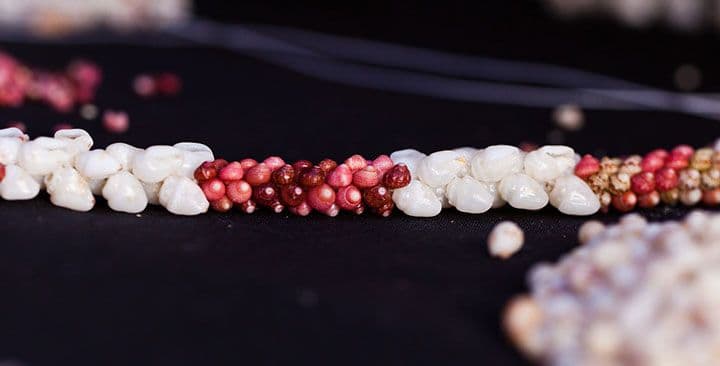
Niihau Shells. Photo courtesy of Hawaii Tourism Authority (HTA) / Tor Johnson.
To prevent shells from other Pacific islands being called Ni’ihau shells it took a campaign that led to the enactment of a law. In 2004 the Hawaii State Legislature passed the law that protects the integrity of the Ni’ihau shells and the skilled artisans dedicated to the art form – their life’s work and sole source of income. Gift shops at Honolulu’s Bishop Museum (Oahu) and Na Mea Hawaii at Ward Warehouse (Oahu) carry documented, certified Ni’ihau shell work, allowing everyone, for a price, to wear and cherish these royal gems of the ocean.
Join our newsletter for travel inspiration, insider tips and the latest island stories.
By subscribing, you agree to receive emails from Hawaii.com. You can unsubscribe anytime. See our Privacy Policy.